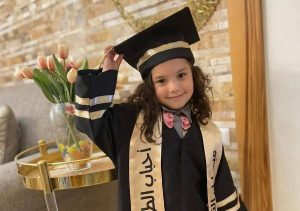Ram Navami marks the culmination of the nine-day festival of Chaitra Navratri and commemorates the birth of Lord Ram and this year it is celebrated on April 21. The festival is celebrated with full gusto in different parts of India including some of the most revered temples in the Maharashtra, a state that is currently witnessing a surge in COVID-19 cases.
So if you can’t take a physical tour of some of the popular temples of the state including The Kalaram Temple in Nashik, the Parashuram Temple in Chiplun, and the Poddar Ram Temple in Nagpur on this auspicious day, you can definitely enjoy the virtual one.
Also Read: ‘Privilegeitis’: Devendra Fadnavis faces backlash as nephew, 23, gets COVID vaccine
Dedicated to Lord Rama, these temples are believed to be the most sacred shrines in the State, according to a statement released by Directorate of Tourism, Govt. of Maharashtra
Kalaram Temple, Nashik
Situated within the Panchvati area, the temple is believed to have been constructed on the same spot where Lord Rama lived during his exile. The idols of Lord Rama, Sita, and Laxmana are made of black stone and hence the name Kalarama. Built around 1788 by Sardar Rangrao Odhekar of the Maratha Empire in consultation with Sawaee Madhavrao Peshwa, the 12th Peshwa of the Maratha Empire and in the Hemadpanthi style of architecture, it is one of the illustrious temples of Lord Ram in western India.
This temple is also known for the commencement of the famous temple-entry satyagraha led by Bharatratna Dr. Babasaheb Ambedkar which became a landmark in Dalit Liberation Movement.
The Ram Navami celebration lasts for three days starting from Navami (the ninth day of a lunar fortnight) to Ekadashi (11th day after the full moon). The third day from Ram Navami marks the chariot processions of Ram and Garuda raths from Kalaram temple.
Close to the Kalaram Temple is the Sita Gumpha or cave of Mother Sita which is a landmark site and is believed to be the place where Sita worshipped Lord Shiva during their exile.
Also Read: ‘Routine pravachan’, nought on Covid vaccine: Opposition’s jab at PM Modi
Parashuram Temple, Chiplun
According to Indian mythology, Parshuram is Lord Vishnu’s sixth incarnation and it is believed that Shri Parshuram pushed back the entire ocean for himself and is the creator of Konkan. It was built around 300 years ago by Brahmendra Swami (Siddis of Janjira and Peshwa of Pune). The ancient temple is magnificent with fabulous architectural beauty, which incorporates both the Hindu and Muslim styles of architecture.
It has an idol of Parashuram in Middle, God Brahma on the right, and Lord Shiva on the left. It has a tradition of more than 100 years of Dashavatar play performed by local villagers.
Ram Navami festival is celebrated on a grand scale at this temple. A special attraction here is the Dashavatar play, which is performed on the occasion of Chaitra Dussehra. The play features ten incarnations of Vishnu, and describes the cycle of human evolution.
Poddareshwar Ram Temple, Nagpur
It is a temple dedicated to Lord Shiva and Ram, built by Shri Jamnadhar Poddar, who was a part of the famous Poddar family of Bissau, Rajasthan, in 1923. Made of marble and sandstone, this magnificent temple reflects the culture of Nagpur.
Every year on the occasion of Ram Navami, a grand Shobhayatra (procession) is organised which comprises various chariots, with people from different communities and castes participating in it.
Also Read: Congress demands ‘one nation, one price’ for COVID-19 vaccines as Centre liberalises policy
Dashavatar:
It is a popular form of theatre with a history of eight hundred years. The term Dashavatar refers to the ten incarnations of Lord Vishnu, the Hindu God of preservation. The ten incarnations are Matsya (fish), Kurma (tortoise), Varaha (boar), Narasimha (lion-man), Vaman (dwarf), Parashuram, Ram, Krishna, Buddha and Kalki.The play is based on costumes and is performed without any technical props.
What makes this play special are the dialogues and the traditional folk songs. This musical drama is accompanied by traditional musical instruments such as Tabla, Harmonium, Cymbals, Attractive Drapery, and historical guise. The Dashavatar performance comprises two sessions: the poorva-ranga (the initial session) and the uttar-ranga (the latter session). The poorva-ranga is the preliminary presentation that precedes the performance proper.
The poorva-ranga is the story about the killing of the demon Shankhasur.
Small theater troops comprising local villagers also perform ‘Dashavatar’ in various cities. This year, however, due to the pandemic they have received very few invitations to perform.






